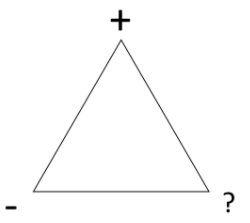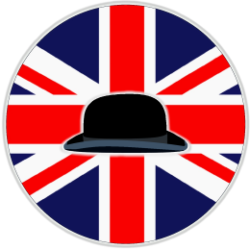学ぶの哲学
英語を学ぶ目的はそれを使う能力であるべきです。
勉強している英語が使えないと、効果的に学習していません。
子供たちもこの哲学で教えられるべきです。教室を去るとき、教えられた言語を使うことができないならば、効果的な方法で教えられなかったことは明らかです
日本語の英語教育では、テストを最も簡単に作成するため、読み書きが強調されますが、この学校では、入力と組み合わせた効果的な出力を強調しています。
読む事、書く事、聞く事、話す事という4つの言語領域すべてを習得できることが重要ですが、聞くと話すことは他の人との相互作用が最も速く、したがって学習の動機が最も高くなります。
コミュニケーショントライアングル
言語を効果的に使用するために何が必要かを理解するために、コミュニケーショントライアングルの原則を使用します。

たとえば、最初のユニットで:
It’s a desk (肯定)
What is it? (疑問 – wh question)
It isn’t a chair (否定)
Is it a table? (疑問 – yes/no question)
認識可能な語彙
語彙の選択も重要です。私たちの学校では、生徒が日常生活で使用する可能性が最も高い語彙を選択するようにしています。
最初のレベルのクラスの語彙リストを見てください:
| School | pen, pencil, eraser, ruler, pencil case, backpack, book, notebook, desk, chair, circle, square, triangle, rectangle |
| Lesson | paint, paper, chalk, yarn, glue, tape, red, yellow, blue, white, black, green, purple, orange, pink, grey, brown |
| Party | 1, 2, 3, 4, 5, 6, 7, 8, 9, 10, 11, 12, doll(s), ball(s), car(s), kite(s), game, marble, puzzle, card |
| Home | mother, father, brother, sister, grandmother, grandfather, juice, chicken, fish, ice cream, pizza, rice, cake, bread |
| Park | flower, tree, rock, river, hill, lake, play soccer, jump rope, fly a kite, ride a bike, turtle, frog, spider, ant |
| Zoo | monkey, elephant, tiger, bear, kangaroo, penguin, snake, giraffe, lion, zebra, run, hope, swim, walk |
| Science | arm, hand, finger, leg, foot, toe, eye, nose, mouth, ear, wash my face, wash my hands, brush my hair, brush my teeth |
| Toy store | old, new, big, small, long, short, fast, slow, noisy, quiet, bus, truck, train, boat |
使える文法
文法もご覧ください:
| School | It’s a ____ / What is it? / It isn’t a ____ / Is it a ____? |
| Lesson | This is ____ / What’s this? / What color is it? / ____ and ____ make ____ |
| Party | I’m ____ / How old are you? / I have one ____ / I have two ____s |
| Home | This is my ____ / Who’s this? / I like ____ / I don’t like ____ |
| Park | I can see a ____ / I can see ____s / What can you see? / I can play ____ / I can’t play ____ / Can you see a(n) ____ -> Yes, I can / No, I can’t |
| Zoo | The ____ is (in / on / under) the ____ / Where is the ____? -> It’s ____ the ____ / Where are the ____s? -> They’re __ the ____ / Can ____s ___? -> Yes, they can / No, they can’t |
| Science | What’s this? -> This is my ____ / What are these? -> These are my ____s / Is this my ____ -> Yes, it is / No, it isn’t / Are these my ____s? -> Yes, they are / No, they aren’t / I can ____ |
| Toy store | That’s an ____ ____ / Those are ____ ____s / What’s that? / What are those? / Is that a ____ ____? -> Yes, it is / No, it isn’t / Are those ____s? -> Yes, they are / No, they aren’t / What’s this? / What’s that? / What are these? / What are those? |
フォニックス開発
フォニックスも学習プロセスの重要な部分です。英語で単語を正しく認識して読むことができるので、学生は単に英語で学んだことを暗記しようとするよりも簡単に語彙を増やすことができます
| Units 1 & 2 | 一般的なフォニックス 1 -> b / p / t / d / m / n |
| Units 3 & 4 | 母音フォニックス 1 -> a / e / i / o / u |
| Units 5 & 6 | 一般的なフォニックス 2 -> f / v / s / z / r / l |
| Units 7 & 8 | マジックeニックス- -> rake / dive / rose / cube / etc. |
宿題
宿題はすべてのクラスで配布され、通常はレッスンの内容に関連したライティングアクティビティで構成され、自宅で完了します。可能であれば、教室をスピーキングとリスニングの活動に使用することをお勧めし、時間(およびお金!)を最も効果的に使用できるからです。
プロジェクト
2つユニットごとに、生徒にチェックアクティビティを実行して、学習した内容を確認し、さらに練習が必要な領域を特定して欲しいです。また、これらの段階でプロジェクトを作成し、生徒が学んだ言語を現実に適用できるようにします。
成果
学生の成果は、オンラインのスターアワードシステムを使用して記録されます。学生には、正常に完了したユニットごとにスターアワードが授与されます。スターアワードシステムは、学生がやる気を維持し、達成したことに誇りを持てるように設計されています。
変革の時?
お子供さんは今英語学校に通っていますか?
最近学んだことを聞いてみませんか?
教えてくれないなら、リッチー先生の英会話教室の体験レッスンはいかがでしょうか?

